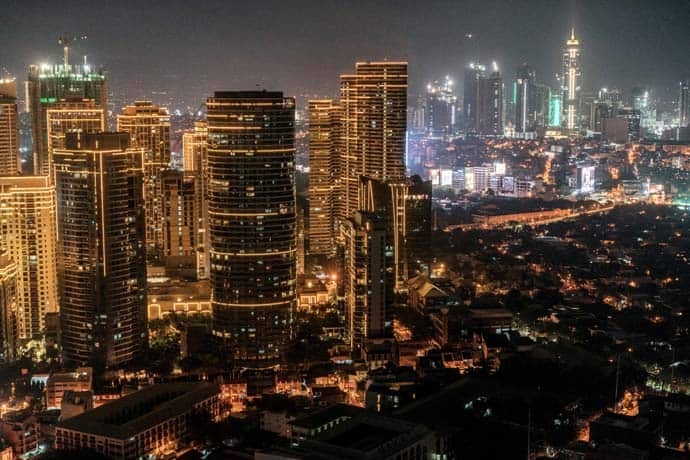
Despite POGO absence
The Philippine office sector continued registering new demand of 109,000 square meters in the first quarter 2021, up 68 percent from 65,000 in the third quarter of 2020, the lowest recorded during the pandemic, despite the absence of POGOs (Philippine Offshore Gaming Operators), according to Leechiu Property Consultants (LPC).
In a media briefing, LPC said the first quarter demand reflected a 22 percent growth than the fourth quarter 2020 demand of 89,000 sqm.
LPC said demand is fueled by the IT-Business Process Outsourcing (ITBPM) sector, which accounted for the largest single take-up at 33,000 sqm.
LPC CEO David Leechiu said that e-commerce take up followed with 19,000 sqm., which more than tripled its take-up from its Q4 level of 6,000 sqm.

“E-commerce is proving to be a sunshine industry,” said Leechiu.
One very notable indicator of resiliency in the property market is that 95 percent of tenants continued to pay rents religiously.
LPC further reported of total requirements of 266,000 sqm. from firms looking to transact within the year. Of the total, IT-BPMs account for 33 percent; POGOs, 12 percent; and retail firms, 7 percent.
“Despite the hardships the retail industry has experienced we are seeing companies adapt, innovate and commit to space in anticipation of a recovery,” Mikko Barranda, associate director noted.
He also added that POGOs started showing interest once again with a live requirement of 31,000 sqm. And while it is too early to tell if POGOs have decided to remain in the country, a resolution of their concerns would help affirm their commitment to the country.
POGO contractions have leveled off to 118,000 sqm., a figure close to their Q4 2020 contraction of 114,000 sqm. and Q3 2020 contraction of 116,000 sqm. The LPC study noted that the trend of decreasing contractions supported by quarter-on-quarter increases in office demand were signs of improving investor confidence.
Leechiu said that most of the lease contracts for some 400,000 sqm signed between 2017 and 2018 have been pre-terminated.
However, the optimist Leechiu expressed confidence of the POGOs return once the COVID situation is over and the tax issue is resolves stressing these businesses are “extremely agile” plus the abundance of qualified workforce in the country.
On the supply side, current vacancy rate across Metro Manila is 11 percent or 1.4 million sqm., most of which are in Quezon City and in Ortigas.
“But it is worth noting that the vacant spaces are spread or fragmented across 330 buildings. Of that total, only 40 buildings have vacancies larger than 10,000 sqm.” Barranda explained. Quezon City has the highest vacancy rate among business districts in Metro Manila.
The figures are a stark contrast to the sector’s pre-pandemic performance but the industry appears to be turning a corner. Overall, the pace of office contractions has slowed down by 19 percent from Q4 2020, greatly supported by the resilient IT-BPM and corporate occupiers.
For the residential sector, LPC also projected of a further rebound from its lowest point in 2020 during Q3.
LPC Associate Director Tam Angel said demand picked up in Q3 and increased once more in the succeeding first quarter of 2021 by 5.7 percent in terms of unit sales. He said that the upper middle to luxury segment is the most resilient among market segments in the residential sector.
However, LPC sad that the stricter 2021 quarantine measures from March 29 to April 30 (MECQ) will most likely continue to affect demand in the mid-income and lower segments.
Angel added that demand is expected to pick up as interest rates continue to decline, a development that will help support the residential sector and will provide greater access to funding for investors across the board. Capital values have remained steady as developers were quick to strategize on launching new projects to maintain market velocity.
Rents, however, softened owing to the lockdowns and quarantine restrictions. Nevertheless, the market view over the long term supports recovery and growth, thus price depreciations are expected to be temporary.
In the next few months, Leechiu expressed confidence that investor sentiments will improve across all sectors once a meaningful portion of the population is vaccinated towards Q4 2021.
This development coupled by the decline in interest rates, the effectivity of the quarantine measures, the implementation of the CREATE Act, and the significant benefits derived from numerous infrastructure projects by year end would further impact these sentiments and determine the state and pace of recovery.
Article and Photo originally posted by Manila Bulletin last April 13, 2021 6:00am and written by Bernie Cahiles-Magkilat.







More Stories
Vista Land Celebrates 50 Years with Sandiwa: An Event Honoring Leadership, Legacy, and the Filipino Dream of Homeownership
Vista Land Celebrates Love Month in Ilocos Region
Vista Land Bridges Cebuano Heritage and Progress with Valencia by Vista Estates